Marvel Snap Game Review
For a long time, the best among conditionally free CCGs (collectible card games) was Hearthstone from Blizzard. For three years, from 2015 to 2018, its lead game designer was Ben Broad. Then he decided to leave, created his own studio, Second Dinner, invited a few more Hearthstone developers there. And together in 2022, they released guess what? Naturally, another CCG, which then - and this is not surprising - was recognized by everyone as the best mobile game of the year. Today we tell you more about the phenomenon and reasons for the success of Marvel Snap.
About gameplay features
Naturally, the main reason for its success is that Ben Broad's new game, like Hearthstone, is based on an extremely popular media universe. There it was World of Warcraft, here it is Marvel, whose heroes and villains (or rather superheroes and supervillains) are the main protagonists in this CCG. They fight each other, but not with the help of other cards or ordinary units, as the heroes of World of Warcraft do in Hearthstone, but exclusively with the help of their own features - well, and competent tactical actions of the player.
The gameplay in Marvel Snap is both similar and at the same time favorably differs from Hearthstone in some places - this is another obvious reason for its success. The similarity lies in the fact that, unlike more elaborate collectible card games like Gwint and Magic: The Gathering, Ben Broad's CCIs (and that's his trademark) are more democratic, understandable, and accessible - while still retaining their tactical and strategic potential.
Duels in Marvel Snap are fast - they last only 3 minutes, and during this time each of the opposing players make a maximum of 6 moves (so there are 12 moves in total) - and the waiting time is naturally limited as well. So you can easily play a match or two on the subway, on the bus or at home before going to bed after a hard day's work.
The gameplay in Marvel Snap is both similar and at the same time favorably differs from Hearthstone in some places - this is another obvious reason for its success. The similarity lies in the fact that, unlike more elaborate collectible card games like Gwint and Magic: The Gathering, Ben Broad's CCIs (and that's his trademark) are more democratic, understandable, and accessible - while still retaining their tactical and strategic potential.
Duels in Marvel Snap are fast - they last only 3 minutes, and during this time each of the opposing players make a maximum of 6 moves (so there are 12 moves in total) - and the waiting time is naturally limited as well. So you can easily play a match or two on the subway, on the bus or at home before going to bed after a hard day's work.
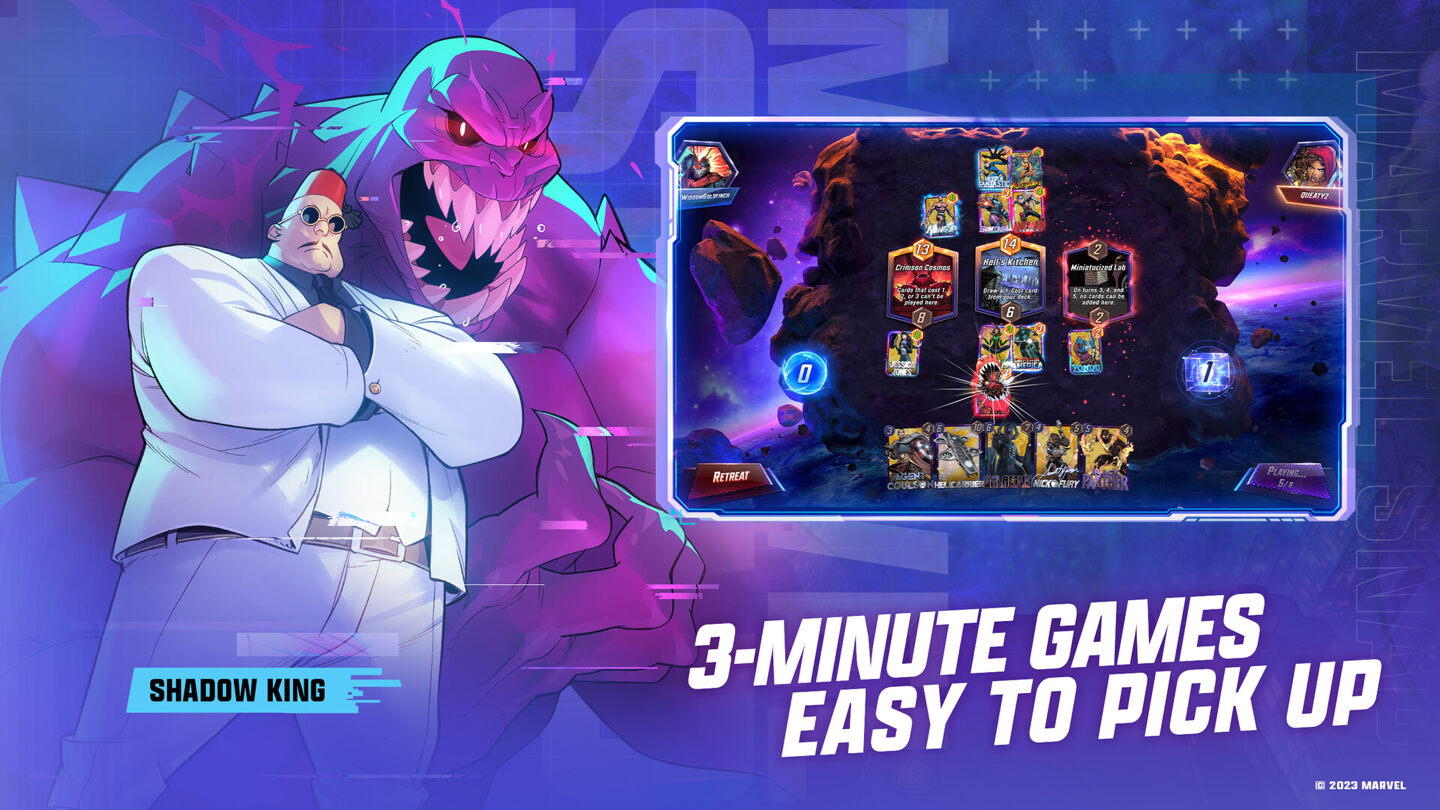
Although you still need to think. The mechanics is very clear, but extremely interesting. In each match there are three locations with their unique properties, which are revealed gradually - the features of the leftmost location we learn on the first move, the middle one is revealed on the next, and the right one in 2 moves. And for 6 moves you need to win on two of the three locations, that is, that the strength of your cards placed there, was higher than the opponent. Each card has its own power, cost (energy is spent on them) and usually unique properties (although some don't have any). Each turn we get a unit of energy.
The specifics of the locations are very different - somewhere you can't play cards of a certain cost, somewhere they get plus 5 or, on the contrary, minus 2 to strength; somewhere the properties of cards don't work until the end of the match, somewhere their effects are doubled. There are also more complicated situations - for example, cards placed on the location of the Altar of Death are destroyed to give plus 2 to energy on the next turn.
The specifics of the locations are very different - somewhere you can't play cards of a certain cost, somewhere they get plus 5 or, on the contrary, minus 2 to strength; somewhere the properties of cards don't work until the end of the match, somewhere their effects are doubled. There are also more complicated situations - for example, cards placed on the location of the Altar of Death are destroyed to give plus 2 to energy on the next turn.
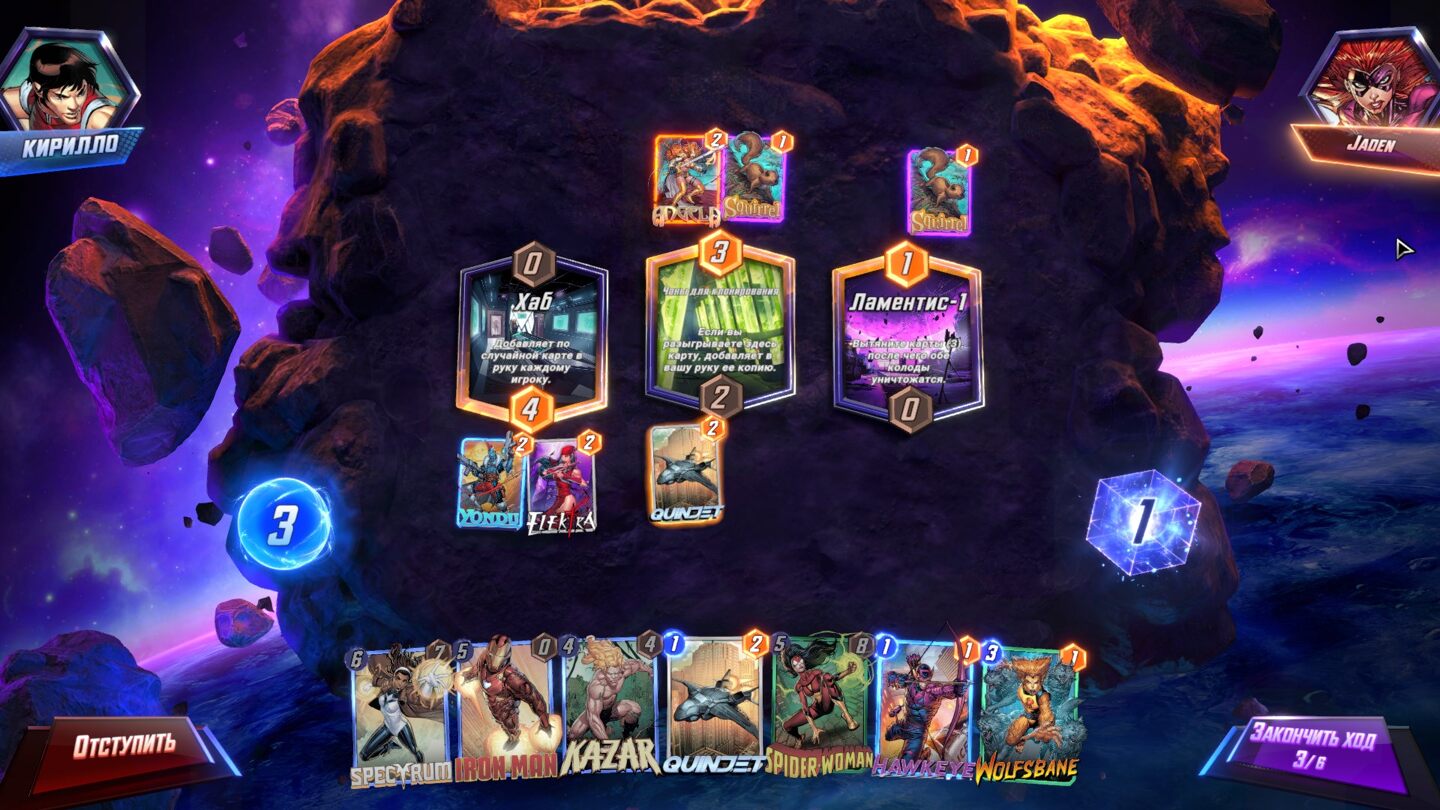
All of this needs to be kept in mind while also considering the properties of the cards being placed. Almost all of them are either permanent or triggered when revealed. And very often these effects are synergetic, i.e. they depend on the properties of other cards or are combined with them. For example, Punisher gets a power bonus for every enemy card in the location, and Wolfmother, on the contrary, for every friendly card. Spider-Woman reduces the power of all enemy cards in the location.
Ant Man gets plus 3 to strength if the entire location is filled with our cards. And Falcon Eye gets the same three points stronger if we play a card next to it on our next turn. Moreover, some heroes are linked to each other and get mutual bonuses if they are in the same location - Star Lord and Gamora, for example.
Ant Man gets plus 3 to strength if the entire location is filled with our cards. And Falcon Eye gets the same three points stronger if we play a card next to it on our next turn. Moreover, some heroes are linked to each other and get mutual bonuses if they are in the same location - Star Lord and Gamora, for example.
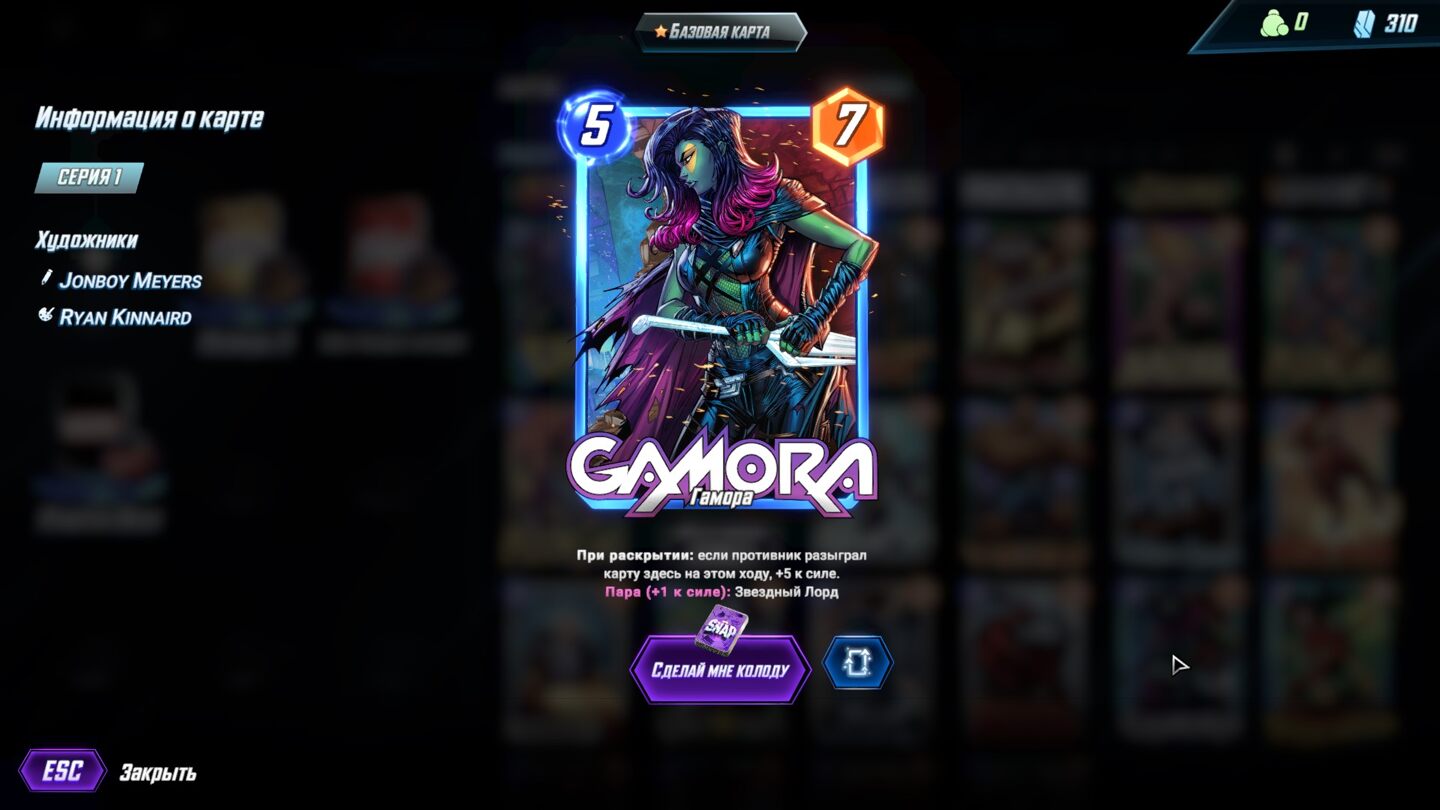
About bluffing and randoms
There are a huge number of maps and locations with different properties in the game, so it's never boring. There were already two hundred of them at the time of release, and new ones have been added regularly since then. Unlike Hearthstone, there are either no or fewer broken cards with excessively weak, non-working or, on the contrary, ultra-strong properties. This is mainly due to the fact that cards are added one by one, rather than as part of entire packs and boosters, which are often forced to be filled with passable cards. In other words, almost every card here is worked out and perfectly integrated into the overall mechanics - and it can always be used if desired.
All cards can and should be improved with the help of credits and boosters earned in the game. It's not the properties or powers of a card that are improved, but its appearance - it becomes animated and even three-dimensional, going from unusual to epic and legendary. And each improvement increases your overall collection level, which unlocks new cards and resources. The maximum collection level goes over 20,000 - you can imagine how many maps and improvement possibilities there are.
All cards can and should be improved with the help of credits and boosters earned in the game. It's not the properties or powers of a card that are improved, but its appearance - it becomes animated and even three-dimensional, going from unusual to epic and legendary. And each improvement increases your overall collection level, which unlocks new cards and resources. The maximum collection level goes over 20,000 - you can imagine how many maps and improvement possibilities there are.
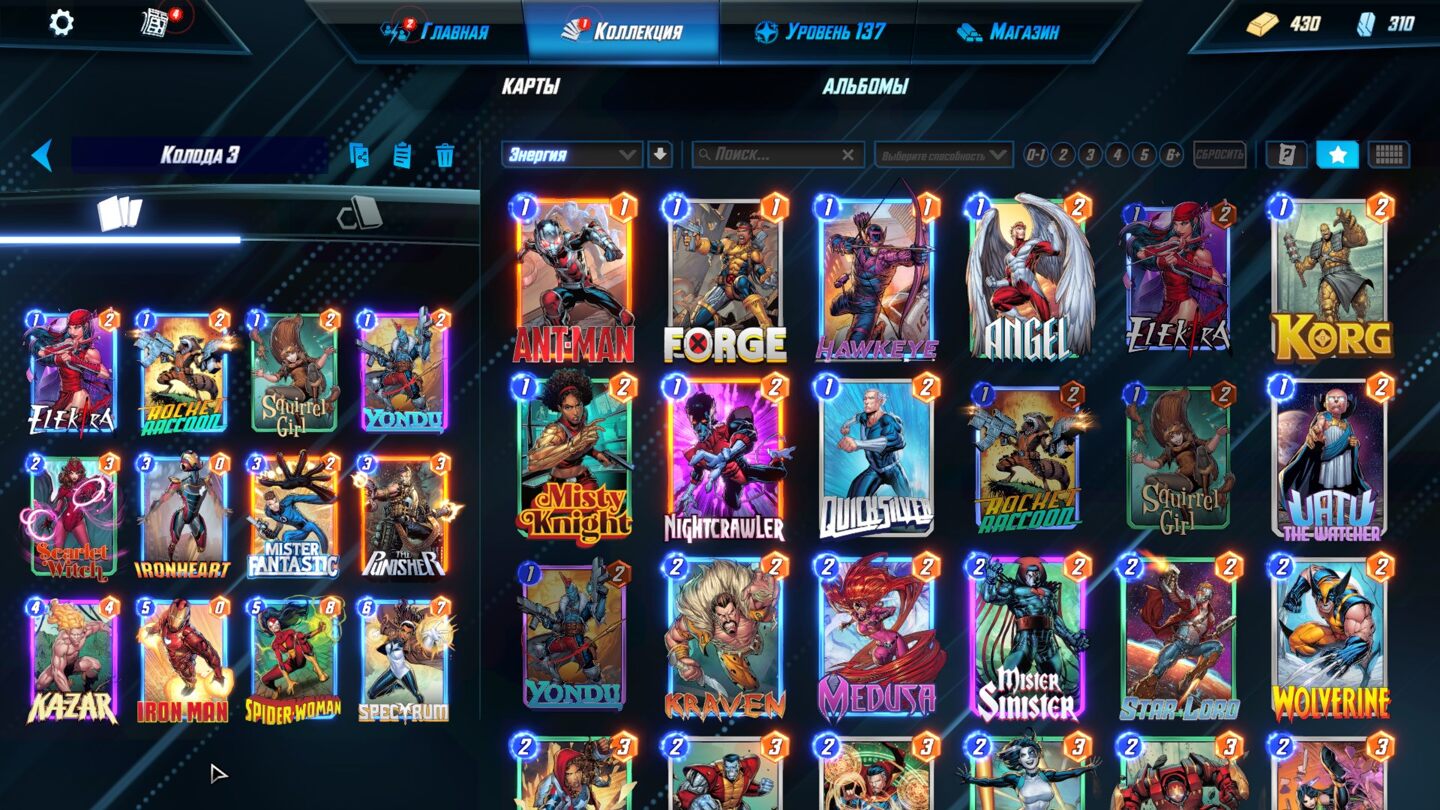
The second most important measure of success in Marvel Snap, besides your collection level, is your ranking, ranging from first ("Newbie") to hundredth ("Infinite"). At each we get new credits, boosters, card variations, card shirts, and avatars and titles to decorate our collection or deck. Ranks are pumped up for the cubes we get for winning matches - and if a match is lost, on the contrary, we lose cubes and ranking levels.
Another unique feature of the game is connected with cubes - right during the battle you can take a risk, press a button and "snap" to double the number of cubes that we will win or, on the contrary, suddenly lose. This will be a signal to the opponent that we are sure to win - well, or bluff to make him nervous and surrender in advance (in this case the cubes are not lost). That is, even when losing, you can "snap" to bluff. All of this, in part, even brings Marvel Snap closer to poker.
Another unique feature of the game is connected with cubes - right during the battle you can take a risk, press a button and "snap" to double the number of cubes that we will win or, on the contrary, suddenly lose. This will be a signal to the opponent that we are sure to win - well, or bluff to make him nervous and surrender in advance (in this case the cubes are not lost). That is, even when losing, you can "snap" to bluff. All of this, in part, even brings Marvel Snap closer to poker.
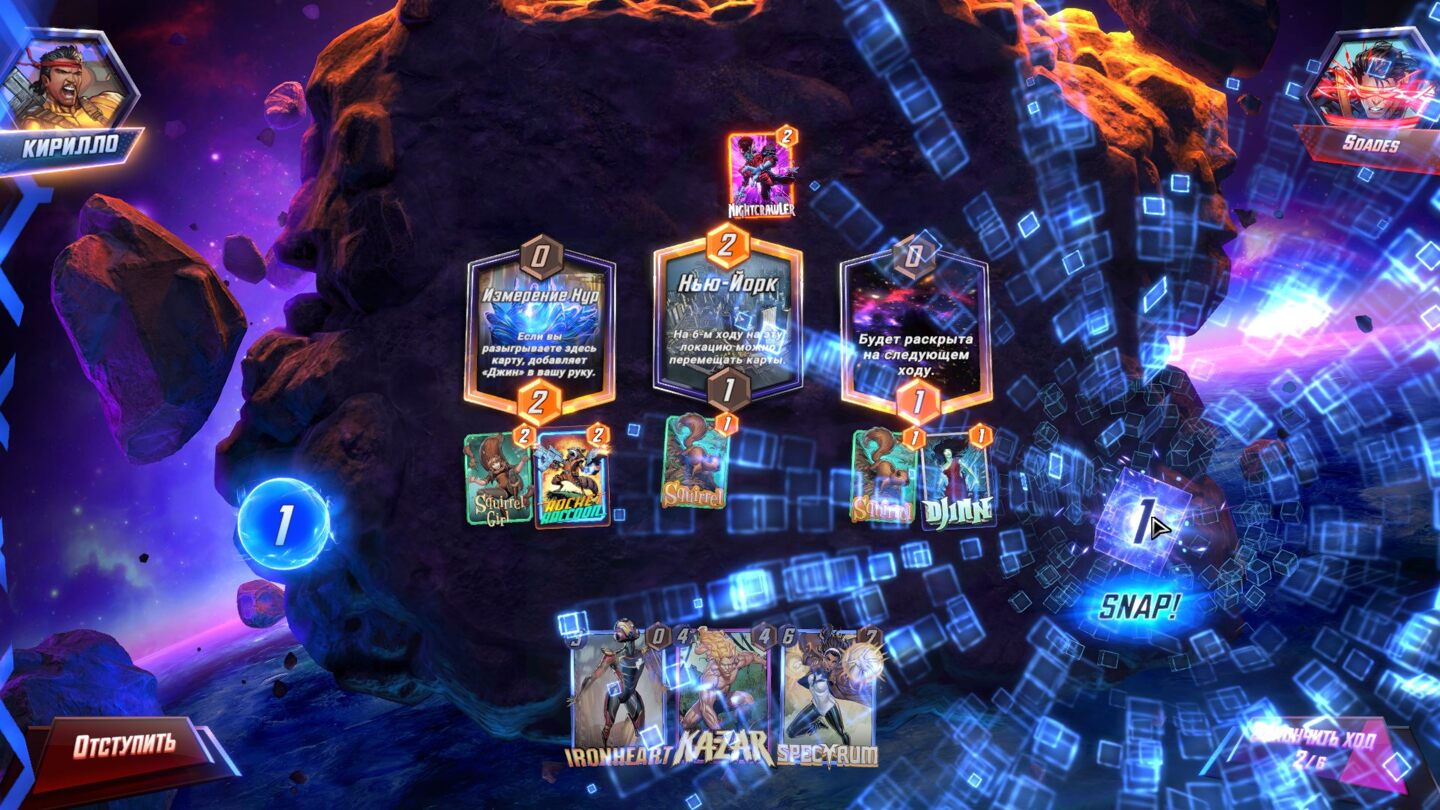
Of course, just like in Hearthstone or any other CCG, Marvel Snap depends a lot on randomization - that is, on what cards you get or not and what locations randomly appear in the match. But because of the mechanics here, it's not as much of an annoyance and affects the game. First of all, there can be only 12 cards in each of your decks, which we ourselves add or remove from the "deck" at any moment - so the risk that what you need won't fall out is significantly reduced.
Secondly, due to the fact that matches are very short, there are no situations when you spent 10 minutes going to victory, thinking over every step, and then because of randomness and one card you lost everything - and in principle, as we have already said, there are practically no overpumped or weak cards that break the balance in Marvel Snap (well, or much less). Finally, the Snap mechanic, which allows you to retreat in time, also reduces losses and regrets from bad randoms.
Secondly, due to the fact that matches are very short, there are no situations when you spent 10 minutes going to victory, thinking over every step, and then because of randomness and one card you lost everything - and in principle, as we have already said, there are practically no overpumped or weak cards that break the balance in Marvel Snap (well, or much less). Finally, the Snap mechanic, which allows you to retreat in time, also reduces losses and regrets from bad randoms.
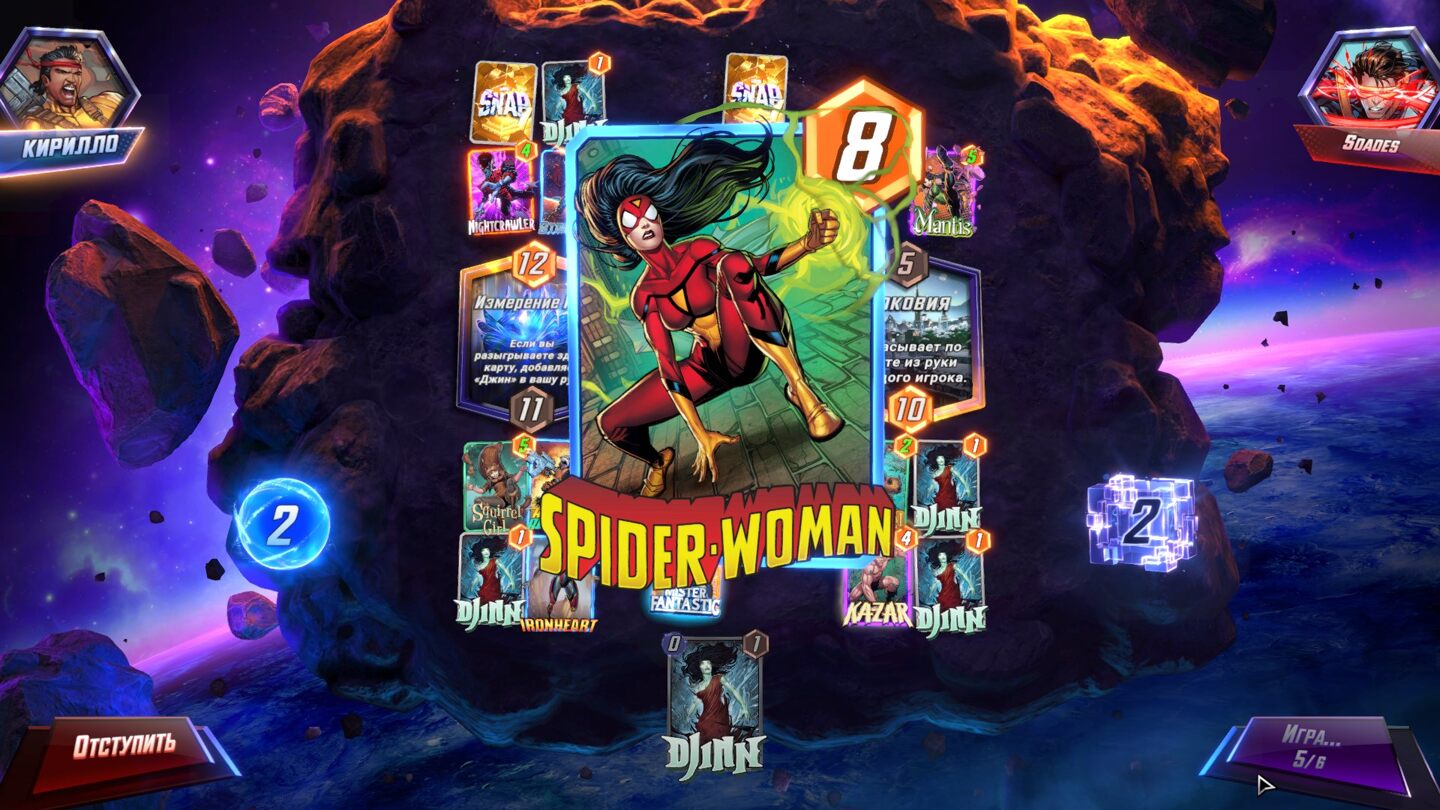
About donation and game modes
We do all of the above in Marvel Snap in three modes. The main default mode is the one where we fight other players or AI-controlled bots (at low rating levels). In addition, there is a mode to play with friends - you create a match and distribute the code to your friends, or join the match again by code.
The third mode is Conquest. In it, users play each other several matches in a row, and each defeat reduces health points. Accordingly, the one who first deprives the opponent of all life points wins. Medals are given for victories - a special currency, which is spent in a separate store. And the number of awards and medals depends on the league we play in - after winning we move to the next league, silver, gold and so on. We get tickets there as a reward for victories or buy them for gold - this is a donation currency, which can be purchased with your own money or sometimes received for some successful actions.
The third mode is Conquest. In it, users play each other several matches in a row, and each defeat reduces health points. Accordingly, the one who first deprives the opponent of all life points wins. Medals are given for victories - a special currency, which is spent in a separate store. And the number of awards and medals depends on the league we play in - after winning we move to the next league, silver, gold and so on. We get tickets there as a reward for victories or buy them for gold - this is a donation currency, which can be purchased with your own money or sometimes received for some successful actions.
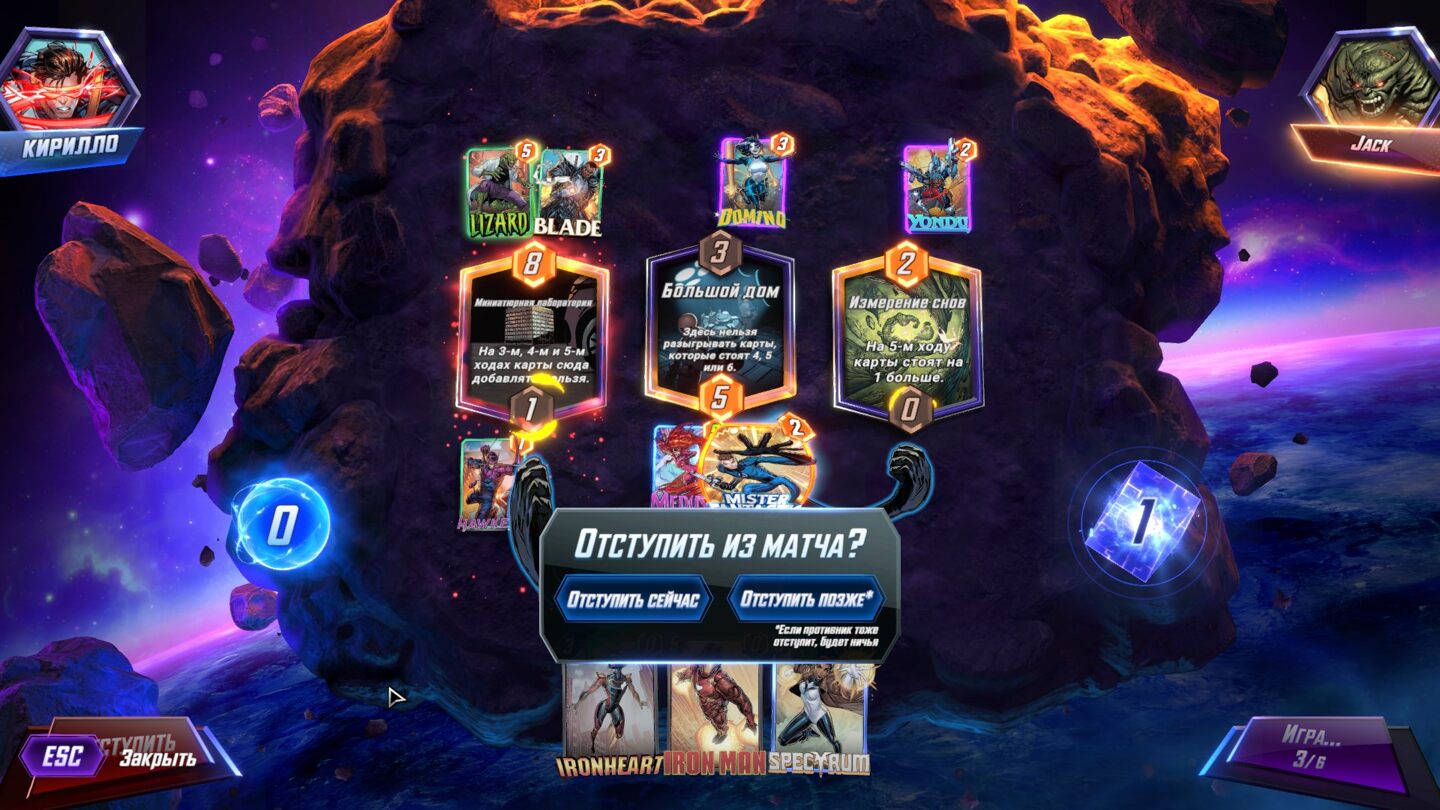
Yes, there are tons of offers to buy the same gold in the store, and in general, donation in Marvel Snap allows you to get benefits. But there are plenty of options to earn currencies and resources for free, too. In the game there are analogs of battle pass, which are updated with each new season (they introduce new maps and characters) and pumped by performing various daily and weekly tasks, and often extremely simple - win 10 matches, take 25 cards, play one card worth 5.
This largely explains the popularity of the game - it allows you to easily play without much investment, pump up and enjoy the extremely accessible and yet quite addictive and thought-provoking mechanics. And at the same time, there are opportunities to invest your own money to, as they say, "show off".
This largely explains the popularity of the game - it allows you to easily play without much investment, pump up and enjoy the extremely accessible and yet quite addictive and thought-provoking mechanics. And at the same time, there are opportunities to invest your own money to, as they say, "show off".
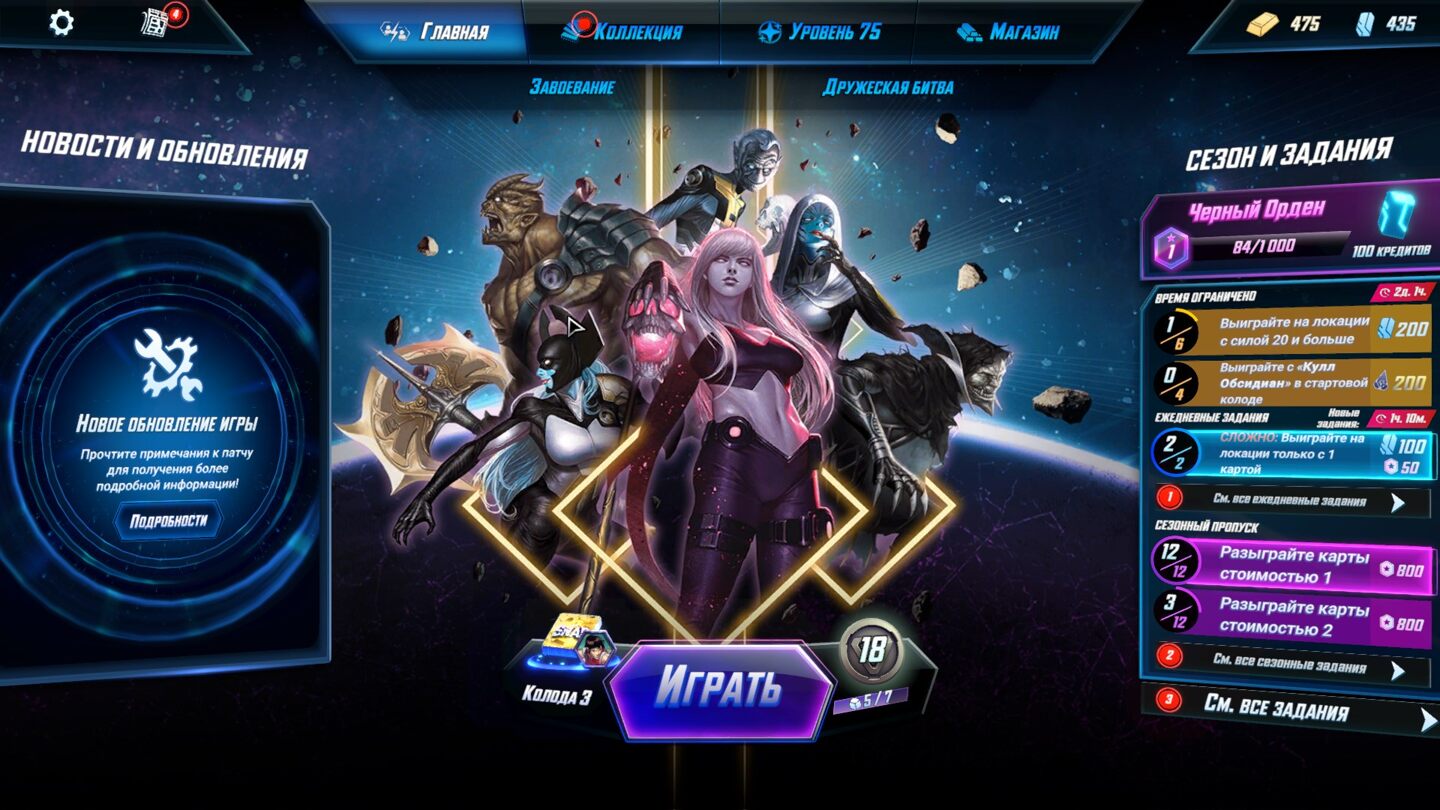
Besides, the game is just starting its journey, it is constantly developing - the PC version is being finalized, to the technical state of which there were claims at first. The graphics and sound have been improved, and support for widescreen monitors has been introduced. Regularly released new seasons and events - so, for Valentine's Day in the game there are new couples of heroes, giving bonuses to each other. Also, Marvel Snap is gradually becoming a cybersport discipline - tournaments on the game were held by ER Esports and EGL, and the streaming platform Twitch announced Twitch Rivals: MARVEL SNAP Duos Showdown with a prize pool of 20,000 dollars.
Conclusion
Marvel Snap is really great, almost the best and the most popular CCG today, which offers accessible, dynamic and in many ways unique gameplay. Of course, it still lacks the external gloss and spectacularity of Hearthstone, but the gameplay is at least as good.
Zarium. March 2024
Zarium. March 2024
